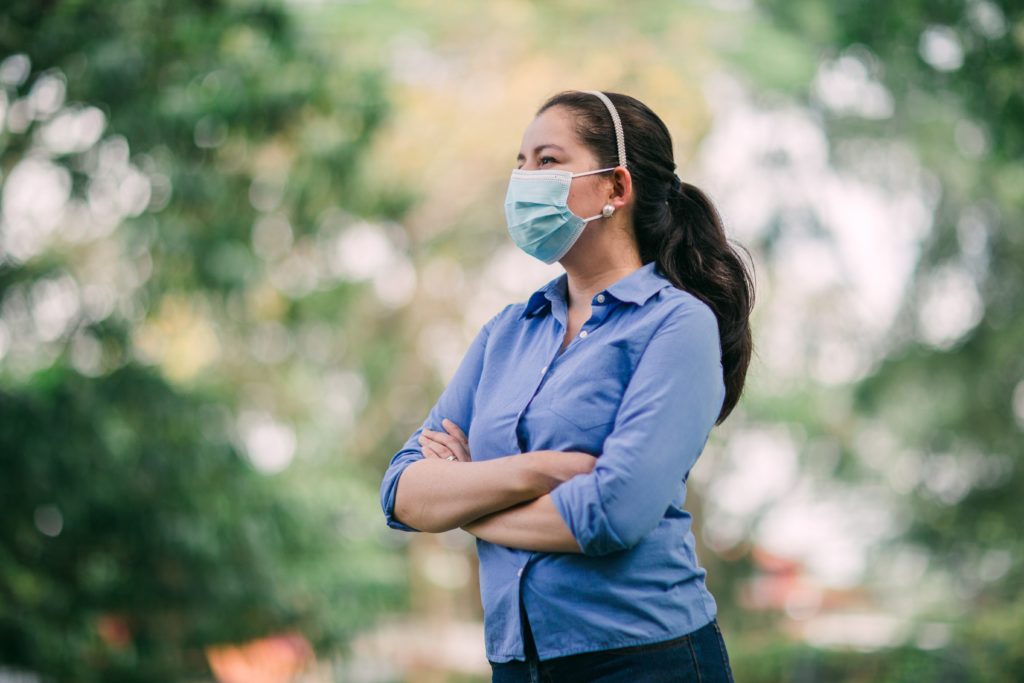How Often Should You Update Your Biosecurity Plan? » Small Business Bonfire

Table of Contents
Maintaining a biosecurity plan is an essential part of protecting your business from the spread of disease.
However, many business owners don’t know how often they should update their plans. In this article, we will discuss the importance of updating your biosecurity plan and provide tips on how to do it effectively.
Spoiler alert. A biosecurity plan should be updated every 12 months.
What is a Biosecurity Plan?
A biosecurity plan is a set of standard operating procedures (SOPs) and protocols designed to protect your business from outbreaks of disease and the spread of infection.
Your plan should be tailored to the specific needs of your business and include measures such as employee training, cleaning and disinfection procedures, and PPE requirements.
Employee training is critical to the success of a biosecurity plan.
Employees must be familiar with:
- The biosecurity plan
- The importance of biosecurity
- The procedures that must be followed in order to minimize the risk of spreading disease
- The risks if procedures are not followed correctly
- All personal protective equipment (PPE) that must be worn when working with potentially infectious material
- Proper procedures in cleaning and disinfection

Cleaning and disinfection procedures are also crucial components of a biosecurity plan.
Surfaces and equipment must be cleaned and disinfected on a regular basis to prevent the spread of disease.
Special care must be taken to clean and disinfect high-traffic areas, such as door knobs, doorknobs, light switches, and countertops.
PPE requirements are also critical to the success of a biosecurity plan.
Employees must wear gloves, masks, and gowns when working with potentially infectious material. Eye protection should also be worn when appropriate.
A biosecurity plan is essential for any business that deals with:
- Food
- Animals
- Hazardous biological materials
- Pharmaceuticals
- Infectious substances
Updating Your Biosecurity Plan
When updating your biosecurity plan, it is important to consult with your employees and other stakeholders.
They will be able to provide valuable input on the effectiveness of current procedures and suggest areas that need improvement.
It is also important to review your biosecurity plan in light of any changes to your business, such as new products or services, changes in employee roles, or expansions to your premises.
Here are some factors to consider when updating your biosecurity plan:
- Changes in technology
- New pathogens or strains of existing pathogens
- The opening of new facilities or the expansion of existing ones
- The arrival of new personnel or the departure of key personnel
- Changes in risk management procedures
How Often Should Biosecurity Plans Be Updated?
The first thing to understand is that biosecurity plans are living documents.
They should be updated regularly to ensure they are effective in protecting your business from the latest threats.
The frequency of updates will depend on the type of business you operate and the level of risk you face.
For example, businesses that operate in high-risk industries or areas should update their plans more frequently than those in low-risk industries or areas.
Some examples of high risk industries include:
- Food production
- Animal husbandry
- Pharmaceuticals
- Hospitality
- Healthcare
As a general rule of thumb, biosecurity plans should be updated every 12 months. This will ensure they are kept up-to-date with the latest changes to your business and the latest threats.
Certain industries require more frequent updates, such as food production and animal husbandry. In these industries, it is best to update your biosecurity plan every 6 months.
Why Do You Need a Biosecurity Plan for Farming?
Biosecurity planning for farms is essential because they are at a higher risk of disease outbreaks.
This is due to the close contact between animals, humans, and the environment. Farms also tend to have a lot of visitors, which increases the risk of disease spread.
A biosecurity plan for farming should include measures such as:
- Restricting visitor access to farm buildings and animal pens
- Improving hygiene procedures for employees and visitors
- Creating a clean and disinfected area for new animals
- Strictly controlling the movement of animals on and off the farm
The importance of developing a biosecurity plan for farming cannot be overstated.
The agriculture industry is responsible for producing the food that sustains us all, and it is essential that we do everything possible to protect this vital sector from harm.
A biosecurity plan helps to identify and mitigate the risks posed by pests and diseases to farm animals and crops.
If a disease outbreak occurs on a farm, it can have devastating consequences. It can lead to:
- Loss of production
- Loss of income
- Death of animals
- Quarantine of the farm
- Closure of the farm.
One example of how devestating an outbreak can be is a case of avian influenza, throughout 17 states, from 2014-2015, that ended up costing US taxpayers more than 1 billion.
By implementing a thorough biosecurity plan, farmers can help it to protect their livelihoods, as well as the health of their animals and their consumers.
A well-functioning biosecurity plan for a farm should include protocols for identifying and responding to potential threats, as well as training for employees on how to properly implement the plan.
Incidents should be reported to the relevant authorities so that they can be investigated and dealt with quickly and effectively. It is also important to have a system in place for tracking and reporting any such incidents that occur.
Fortunately, these processes are easier to streamline than ever, with the advent of new technology. Farmers are able to add high tech to agricultural processes.
For example, there are now apps available that:
- Allow farmers to quickly and easily report incidents
- Track the movement of animals on and off their property.
- Keep track of crops
- Track the weather and news as it relates to agriculture
Regular reviews of the biosecurity plan are essential in order to ensure that it remains up-to-date and effective.
Farmers can create accurate field maps using sensors and GPS. All of this helps to ensure that any potential problems are dealt with swiftly and effectively when implementing and following a biosecurity plan.
There are many ways for diseases to spread on farms, such as:
- Livestock being too close together
- Inadequate fencing
- Dirty equipment
- Contaminated water sources.
- Pests and wildlife
- The environment
- People working without proper gear or training
Farmers have a responsibility to protect their animals and crops from pests and diseases, but they also need support from the government in order to do so.
The agricultural sector is a critical part of our economy, and it is important that we do everything possible to safeguard it.
After all, agriculture makes up 10.3% of all US employment
A biosecurity plan helps to minimize the risk of disease outbreaks by outlining specific procedures that must be followed
A well-designed biosecurity plan will help to reduce the risk of disease outbreaks and protect your business.

How could you develop a plan for different types of livestock?
A biosecurity plan for different types of livestock would include specific measures that should be taken to protect the animals from diseases.
Some of the things that could be included in a biosecurity plan for livestock include:
- Making sure that all people who come in contact with the animals are vaccinated and have up-to-date immunization records
- Restricting access to the animals to only authorized personnel
- Keeping the animals’ living areas clean and free of debris and waste
- Regularly cleaning and disinfecting all equipment and surfaces that come into contact with the animals
- Providing appropriate food and water to the animals
- Monitoring the health of the animals and reporting any signs of illness or distress
What Are the Levels of a Biosecurity Plan?
There are three levels of biosecurity:
- Primary (prevention),
- Secondary (preparedness)
- Tertiary.
Primary (prevention) biosecurity measures are the first line of defense against disease. They aim to prevent pests and diseases from entering your property in the first place.
Secondary (preparedness) biosecurity measures are put in place to reduce the spread of diseases that have already entered your property.
Tertiary (response) biosecurity measures are designed to limit the impact of a disease outbreak and help you recover from it quickly.
The level of biosecurity you need will depend on the type of business you operate, as well as the specific risks posed by the diseases that are present in your area.
How Can You Develop a Biosecurity Plan?
Follow these 4 steps in order to develop a biosecurity plan:
- Establish biosecurity protocols
- Screen personnel
- Educate personnel
- Monitor compliance
1. Establish biosecurity protocols:
Establish protocols for how personnel should handle, move, and store animals and animal products. Protocols should also address how to clean and disinfect facilities, equipment, and vehicles.
2. Screen personnel:
Screen all personnel for evidence of disease before they are allowed to work with animals or animal products.
3. Educate personnel:
Train all personnel on the biosecurity protocols and ensure they understand the importance of following them.
4. Monitor compliance:
Periodically monitor compliance with the biosecurity protocols and take corrective action as needed.
Wrapping up!
The bottom line is that a biosecurity plan is a vital tool for any business that deals with food, animals, or hazardous materials. If you don’t have a biosecurity plan in place, now is the time to develop one. And if you already have a plan, make sure it is up-to-date and being followed by all personnel.
Regular reviews of your biosecurity plan will help to ensure that it remains effective in protecting your business from disease outbreaks.
What other tips do you have for developing, implementing, and updating a biosecurity plan? Share your thoughts in the comments below!
Frequently Asked Questions
Q: Why is Biosecurity Important?
A: Biosecurity is important because it helps to protect businesses from disease outbreaks.
Q: Why Does New Zealand Have the Tightest Biosecurity?
A: New Zealand has the tightest biosecurity because it is an island nation with a high risk of disease outbreaks.
Q: What Are the Levels of a Biosecurity Plan?
A: The three levels of a biosecurity plan are primary (prevention), secondary (preparedness), and tertiary (response).
Q: What Types of Biosecurity Protocols are There?
A: There are many different types of biosecurity protocols, but some common ones include movement control, cleaning and disinfection, and waste management.
Q: What is a farm biosecurity sign?
A: A farm biosecurity sign is a sign that is placed on a farm to remind the workers of the farm to practice good biosecurity measures. The sign may remind the workers to clean their boots, wash their hands, or not to bring in contamination from other farms.
Q: What is a vaccination schedule for biosecurity?
A: The vaccination schedule for biosecurity can vary depending on the disease or virus that is being vaccinated against. However, in general, a vaccination schedule for biosecurity will involve a number of doses given over a period of time.

